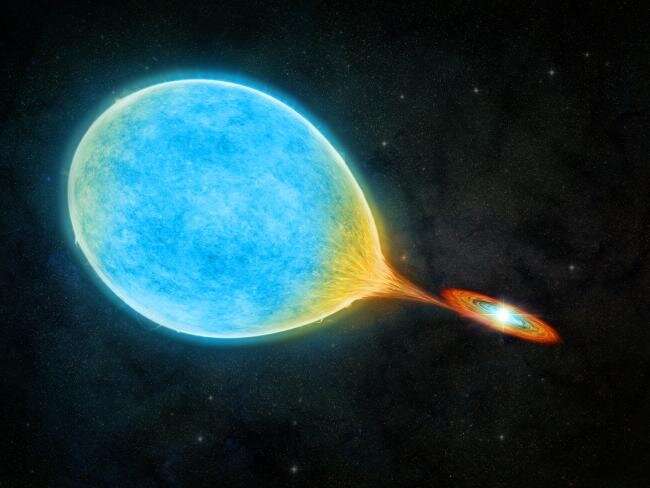| Manu | Date: Thursday, 02-December-2021, 5:16 AM | Message # 1 |

--dragon lord--
Group: undead
Messages: 13976
Status: Offline
| Astronomers observe a new type of binary star long predicted to exist
by Harvard-Smithsonian Center for Astrophysics

Credit: M.Weiss/Center for Astrophysics | Harvard & Smithsonian
Researchers at the Center for Astrophysics | Harvard & Smithsonian have observed a new type of binary star that has long been theorized to exist. The discovery finally confirms how a rare type of star in the universe forms and evolves.
The new class of stars, described in this month's issue of the Monthly Notices of the Royal Astronomical Society, was discovered by postdoctoral fellow Kareem El-Badry using the Shane Telescope at Lick Observatory in California and data from several astronomical surveys.
"We have observed the first physical proof of a new population of transitional binary stars," says El-Badry. "This is exciting; it's a missing evolutionary link in binary star formation models that we've been looking for."
A New Type of Star
When a star dies, there's a 97 percent chance it will become a white dwarf, a small dense object that has contracted and dimmed after burning through all its fuel.
But in rare instances, a star can become an extremely low mass (ELM) white dwarf. Less than one-third the mass of the Sun, these stars present a conundrum: if stellar evolution calculations are correct, all ELM white dwarfs would seem to be more than 13.8 billion years old—older than the age of the universe itself and thus, physically impossible.
"The universe is just not old enough to make these stars by normal evolution," says El-Badry, a member of the Institute for Theory and Computation at the Center for Astrophysics.
Over the years, astronomers have concluded that the only way for an ELM white dwarf to form is with the help of a binary companion. The gravitational pull from a nearby companion star could quickly (at least, in less than 13.8B years) eat away at a star until it became an ELM white dwarf.
But evidence for this picture is not foolproof.
Astronomers have observed normal, massive stars like our Sun accreting onto white dwarfs—something called cataclysmic variables. They have also observed ELM white dwarfs with normal white dwarf companions. They had not, however, observed the transitional phase of evolution, or the transformation in between: when the star has lost most of its mass and has nearly contracted to an ELM white dwarf.

Read more/full article/source -
https://phys.org/news/2021-12-astronomers-binary-star.html
|
| |
| |















